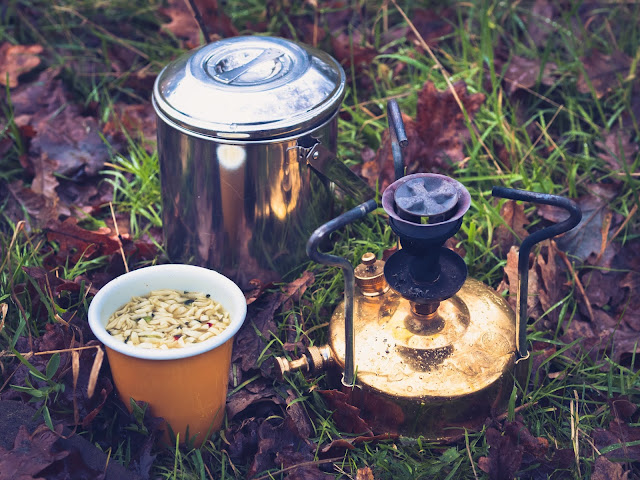 |
| The Woodsman's Pantry Kit |
The idea of the woodsman's pantry is to carry foods that can be supplemented by hunting, fishing or foraging in the wild. With this in mind, we have to think carefully about what foods are suitable. Fresh meats are going to spoil fast, especially in warmer climates. If you're thinking about taking meats with you, these should be either salted or dried for longevity. Beef jerky is a good choice as it's rather compact and takes up little room in your pack. This can then be rehydrated and added in to create some rather nice meals. I keep meats inside my food bag, which are wrapped in cloth. Sometimes I will take salted meats with me as these are cured and will not go off.
 |
| Beef jerky is a perfect food to take into the wild |
There are plenty of dry foods that are perfect for taking into the wild. Porridge oats are possibly the best option to take into the wild for breakfast or even a late lunch. They are one the healthiest options and they provide plenty of slow release carbohydrates which are perfect for high activity. Porridge oats are perfect for being supplemented with foraged wild edibles. Depending on the time of year, blackberries or raspberries are a great addition and they can be picked easily. I carry porridge oats in one of the 10oz tins.
Instant ramen noodles are a popular choice for a quick lunchtime snack. They're quick and easy to make. They also don't take up too much room, this is perfect if you're looking to save space and pack light. I normally carry a few packs of my favourite flavours inside my food bag.
Another food that I and many others like to carry is a trail mix. This is a mix of nuts and dried berries, this can be tailored to your taste. Nuts contain plenty of fats and other nutritional values, this makes them perfect to take on longer camps or if you're hiking long distances. I like to carry my trail mix in a waxed cotton canvas bag that is lined with cotton.
 |
| Hessian and waxed cotton canvas bags |
Rice is another good choice to carry in your pack. It's easy to cook and can be supplemented with a variety of wild mushrooms, fish and game. I store my rice in one of the 10oz tins. Pasta is also a great choice to carry and again much like rice, can be supplemented with other foods in the wild.
 |
| Wood Ear (Auricularia auricula-judae) is a wild edible that is a good supplement for rice |
I also like to carry a selection of spices and herbs. These take up a tiny amount of space in the food bag and are a great way of adding flavour to bland meals. Salt and pepper are popular options to carry however, I've opted to carry "Kitchen Pepper". This is a blend of salt, pepper, ginger, cinnamon, cloves and nutmeg. This can be adjusted to your liking and what spices you have available. There is a fantastic video by Townsends on YouTube which goes into history and the making of this spice blend in further detail.
As part of planning my longer trips, I always write down a list of what foods I am going to be carrying. This is a great way to visualise what meals you're going to be making over the duration of your wild camp. I will also ensure nutritional intake and calorie intake are as close to recommended daily amounts as they can be. This is always my first starting point when planning out my food bag. There are plenty of avenues to explore and experiment with when using the woodsman's pantry concept of supplementing with wild edibles, fish and game. It's enjoyable to experiment and try out new ideas.

Comments
Post a Comment